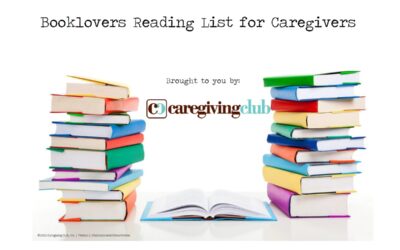For most of us, Labor Day signifies the official end of summer, the last day women should wear white (although this rule has been waning in recent years) and the beginning of football season. However, the first federal observance of Labor Day in 1894 established this holiday to “celebrate the economic and social contribution of workers.”
I can think of no better “labor force” than the 65 million Americans who are providing unpaid care to a loved one who is aging, has a chronic illness or disability. In fact, a 2011 AARP report showed that the economic value of those 44 million caring for someone over the age of 50 using 2009 data (so this does not include the additional 11 million caregivers for those under age 50) is $450 billion annually.
What does $450 billion in annual societal and economic value really mean? Consider this:
- That is $89 billion more than the total spent by the U.S government and state agencies for Medicaid in both health care and long term care services & support
- That is $42 billion more than the total sales of the country’s largest company – Wal-mart – and $11 billion more than the total sales of the three largest auto makers – Toyota, Ford, Daimler – combined
- It would be equal to these caregivers handing each and every American citizen $1,500
- It would represent 3.2 percent of the U.S. gross domestic product (GDP)
In fact, if the family caregivers were to all just “walk off the job” today – we would have a health care crisis of unimaginable proportion. They provide 80 percent of the care needed to keep our rapidly growing aging society – 35 million over age 65 today growing to 70 million in 10 years – living at home as independently and as long as possible.
And yet, family caregivers are navigating a system that is fragmented, complicated and frustrating. The stress that many caregivers feel can become a chronic source of health issues that can escalate over time. In fact, a study conducted by the Commonwealth Fund found that family caregivers are twice as likely as the general population to develop multiple chronic illnesses – asthma, heart disease, diabetes, cancer, etc. – earlier in life due to prolonged stress.
Solutions for Society’s Caregivers
We all play a role in supporting the labors of our family caregivers. Here are my recommendations and some solutions for each group’s role:
- Employers – if you look at your workforce as one of your greatest assets then you must acknowledge that supporting working caregivers will enhance your bottom line. Seventy-three percent of caregivers work full or part-time but only 11 percent of all U.S. employers offer some sort of caregiver support service through a work-life program or employee assistance program (EAP). It is time to close that gap and acknowledge caregiving as a life event that will impact many of your employees over the years to come.
- Government – Some government agencies are acknowledging the value of caregivers by providing more information to help them navigate the system. Medicare offers a Web site with information on how to understand your loved one’s Medicare needs and benefits and the National Area Agencies on Aging (N4As) offers both an online and toll-free telephonic resource to connect you with the services in your county and state.
- Medical and Other Professionals – Family physicians should recognize a change in caregiver’s behavior or health by asking questions about whether they have recently taken on the role of caregiver. A Caregiver Stress Test developed by the American Medical Association – available in both English and Spanish – is available on their Web site and should either be given by the family physician or if the caregiver feels their health is suffering under the strains of caregiving – take the test and provide the results to your doctor.
In addition, there are professionals in elder care called professional geriatric care managers who can help caregivers find transportation, meal delivery services, in-home health aides, etc. You can find one online at the NAPGCM Web site.
- Social Networks (Family, Friends) – there are online communities where caregivers can either sign up themselves or have a family or friend create a way for others to help support them through a caregiving situation. This is essential to helping caregivers avoid the traditional “burn-out” and stress that can be associated with caring for a loved one. My favorite of these sites is Lotsa Helping Hands – a free online community with resources, calendars and other great tools to help caregivers.
- Caregivers – individual responsibility in a caregiving situation requires balancing self-care while caring for your loved one. Sometimes this is easier said than done but if you do not maintain your own health and wellness and you do become too fatigued or ill to care for them – who will?
One way to always ensure the balance is there is to adopt healthy habits and check in with yourself on your progress. One of my favorite ways to do this is a campaign called Caregivers’ Monday – developed by the non-profit Monday Campaigns which shows that based on research by Johns Hopkins and other universities, adopting healthy habits on a Monday and using that day to chart your progress shows longer-lasting and more successful results. Check out their caregiver tips on their Web site and watch the Caregiving Club’s Me Time Monday video tips that support the Caregiver’s Monday Campaign.



0 Comments